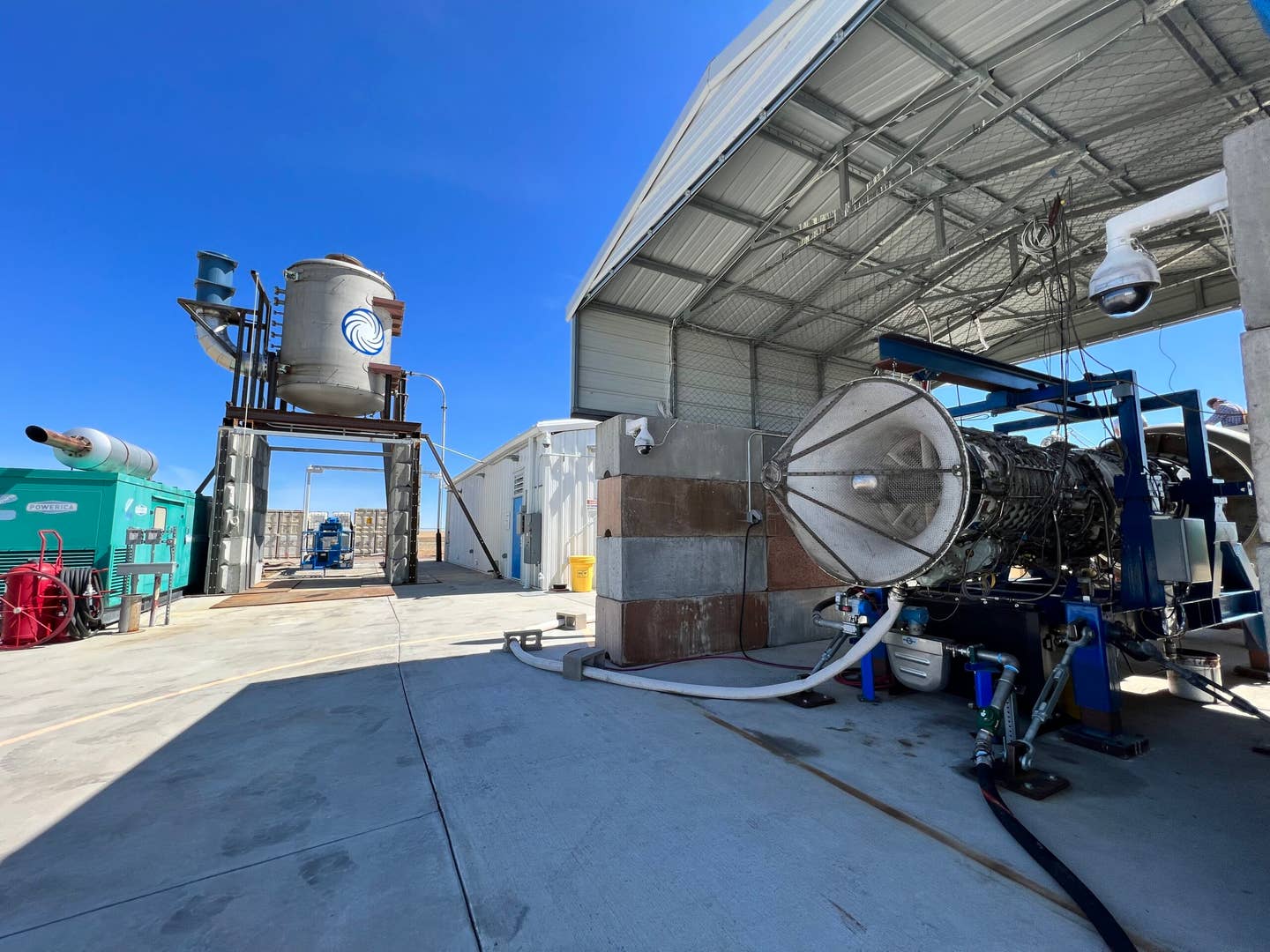Test Aims To Advance Hybrid Rocket-Jet Engine
U.K.-based Reaction Engines has a DoD contract to further validate technology for a hybrid jet-rocket high-Mach engine.

The testing campaign, which is also supported by the Air Force Research Laboratory, seeks to build upon previous evaluations of the company’s thermal management technology. [Courtesy: Reaction Engines]
Reaction Engines, developer of the air-breathing SABRE rocket engine, has launched a new phase of testing of its high-Mach propulsion technology under a Pentagon contract, the U.K.-based company announced Thursday.
The testing campaign, which is also supported by the Air Force Research Laboratory, seeks to build upon previous evaluations of the company's thermal management technology that cools extreme temperatures by using oxygen from ambient air in order to reach speeds up to Mach 5 before shifting to rocket mode.
“The exciting outcome that I am looking forward to over the coming weeks is the validation that our technology could enable current jet engines to operate from takeoff up through Mach 4 and beyond," Andrew Piotti, the engineering manager for Reaction Engines U.S., said in a statement.
Thursday's announcement is the latest development for the company that aims to revolutionize access to space travel and high-speed flight.
In 2019, Reaction Engines reported that it reached a significant milestone in the development of its Synergetic Air Breathing Rocket Engine—known as SABRE—after it validated its precooler technology that manages extreme hypersonic heat conditions that occur during travel at Mach 5, or five times the speed of sound. The heat exchanger is key in managing the high temperature airflows of the SABRE engine that is described as a hybrid between a rocket and jet engine.
The company's precooler was found to be capable of cooling air from 1,800 degrees Fahrenheit in 1/20th of a second, the company said following a test in October of that year. The technology could also have application in existing jet engines and other commercial applications, the company said.
The new round of testing seeks to "expand the performance envelope," by increasing the delivered air mass flow rate, "which will result in a three-fold increase in the total energy transfer through the engine heat exchanger," the company said Thursday.
Earlier this year, the company announced it was adding additional ground support equipment at its High Temperature Airflow test facility located at the Colorado Air and Space Port near Denver to accommodate a planned tripling of heat load. The upgrades are expected to create high-Mach propulsion test conditions on the ground.
The testing campaign was launched through the U.S. Department of Defense Foreign Comparative Testing (FCT) Program, which seeks to discover and assess foreign technology that could potentially meet the needs of U.S. defense requirements.
“FCT demonstrates U.S. commitment to a ‘two-way street’ for defense procurements with both allied and friendly nations," Air Force FCT manager William Reed said in a statement. "Reaction Engines technology is world-class and is a great fit for the FCT program."
Early designs of the SABRE engine core have passed muster with The European Space Agency (ESA), which has invested at least GBP 10 million in its development, in addition to a GBP 50 million investment from the UK Space Agency.
"SABRE is uniquely designed to scoop up atmospheric air during the initial part of its ascent to space at up to five times the speed of sound. At about 25 km it would then switch to pure rocket mode for its final climb to orbit," ESA said following a round of testing in 2019. "In [the] future SABRE could serve as the basis of a reusable launch vehicle that operates like an aircraft. Because it would carry much less bulky onboard oxygen supplies, such a vehicle could deliver the same payload to orbit of a half the vehicle mass of current launchers, as well as potentially offering a large reduction in cost and higher launch rate."

Sign-up for newsletters & special offers!
Get the latest FLYING stories & special offers delivered directly to your inbox






